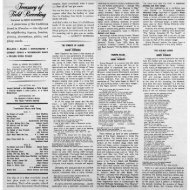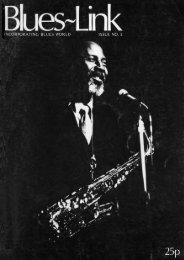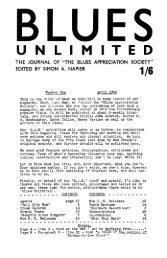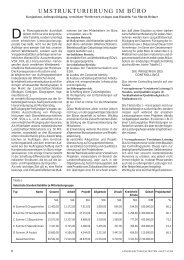memphis jug baimi - Planungsbüro Dipl.-Ing. Stefan Wirz
memphis jug baimi - Planungsbüro Dipl.-Ing. Stefan Wirz
memphis jug baimi - Planungsbüro Dipl.-Ing. Stefan Wirz
Create successful ePaper yourself
Turn your PDF publications into a flip-book with our unique Google optimized e-Paper software.
(later to become “ Dyin’ Crapshooter” ), which included ‘ snatchin’ the pillow’ from<br />
under his head, specification of wreath arrangement, pall-bearers and epitaphs.<br />
One aspect of dying, mentioned in essence more in Gospel and Spirituals, is the<br />
prospect of an afterlife. Secular Blues singers seem to be rather non-committal on this<br />
point, or rather diplomatic, as from the commercial viewpoint of record-sales he would<br />
have to be careful not to offend anyone with religious tendencies by singing Blues which<br />
may have denounced those religious beliefs. Singers, it is often noticed, would perform<br />
Blues under their own names and ‘ sanctified’ music under a pseudonym. Son House, in<br />
his formidable masterpiece “ My Black Mama” states his own convictions thus:<br />
Hey— t ’aint no heaven, says it ain 't no bumin' hell,<br />
Says, where I ’m goin’ when I die— can’t nobody tell.<br />
Where indeed? But the concept of ‘ramblin’ an’ wanderin’ has been a constant<br />
catalyst in Blues Lyrics, even after death, for Robert Johnson in particular:<br />
You may bury my body down by the highway side.<br />
Spoken: Babe, I don't care where you bury my body when I ’m dead an ’ gon e. . .<br />
You may bury my body, oooh, down by the highway side,<br />
So my old evil spirit can get a Greyhound Bus and ride.<br />
(“ Me And The Devil” )<br />
The spirit of the Blues certainly lives on through the recordings of these long-gone<br />
singers; one thing is certain, the Blues will never die.<br />
KoMino Arnold<br />
(This article was originally written in French. We would like to say a special thank you to<br />
Clare Jenkins for translating it).<br />
Kokomo Arnold is high up on the list of ‘ Bottleneck’/ ‘ Slide’ guitarists. However,<br />
despite being one of the blues giants of immense talent, not much has been written about<br />
him. In 1959 Jacques Demetre and the late Marcel Chauvard succeeded in interviewing<br />
Kokomo which later appeared in Jazz Hot no. 154 May 1960. It is from that interview<br />
that some of the extracts quoted in this article have been taken.<br />
I am a native o f Georgia. I was bom on February 15th 1901 in Lovejoy, a little<br />
village south o f Atlanta. Yes I was a farmer, but at the same time I used<br />
to play the guitar a bit, with my cousin John Wiggs. He gave me my<br />
musical inspiration.<br />
In 1919 Kokomo left his home for Buffalo, later moving on to Pittsburgh and Gary,<br />
where he worked as a labourer in the steel works. It has been surmised that Kokomo<br />
travelled a great deal between 1919 and 1929, even suggested that he crossed the Atlantic<br />
to Spain. This hypothesis being based on such a seasick journey in “ Big Ship Blues”<br />
recorded in 1937. Be that as it may, we know for sure that he found his way to Chicago in<br />
1929, which was to be his base, even though from there he moved around a lot.<br />
In 1930 Kokomo was in Memphis to cut a disc for Victor using the pseudonym<br />
Gitfiddle Jim. These two sides, “ Paddlin’ Blues” and “ Rainy Night Blues” , are among<br />
the gems of recorded blues. First and foremost they are instrumental showpieces<br />
highlighting Armold’ s very personal skill and technique. With his guitar placed flat on<br />
his knees, his left hand plucks the strings with speed and dexterity, whilst his right slides<br />
a blade over the strings of the neck. Exaggerating the use of this primitive bottleneck for<br />
the melody line, he accompanies it with a flourish, creating an irresistable swing.<br />
27












